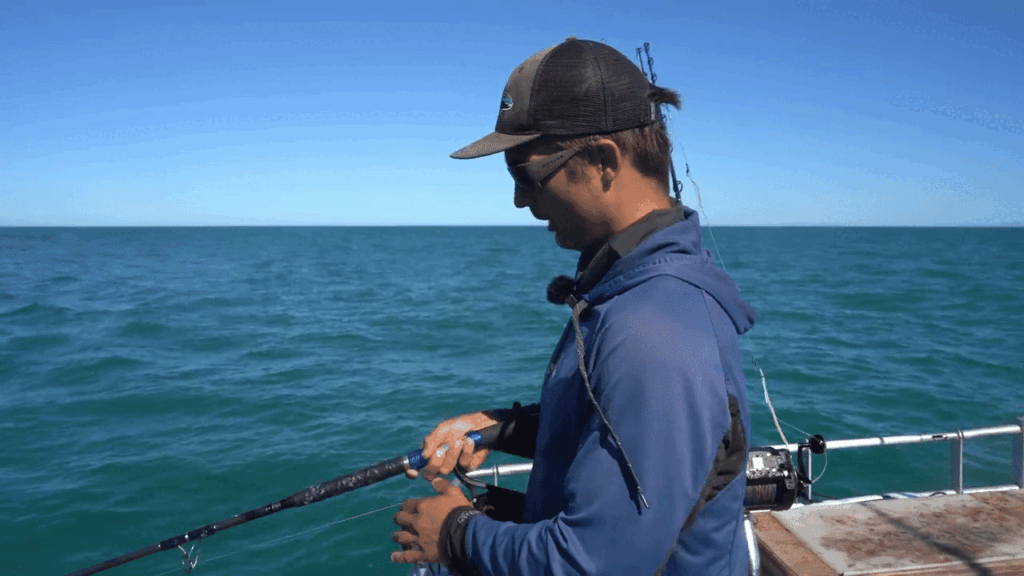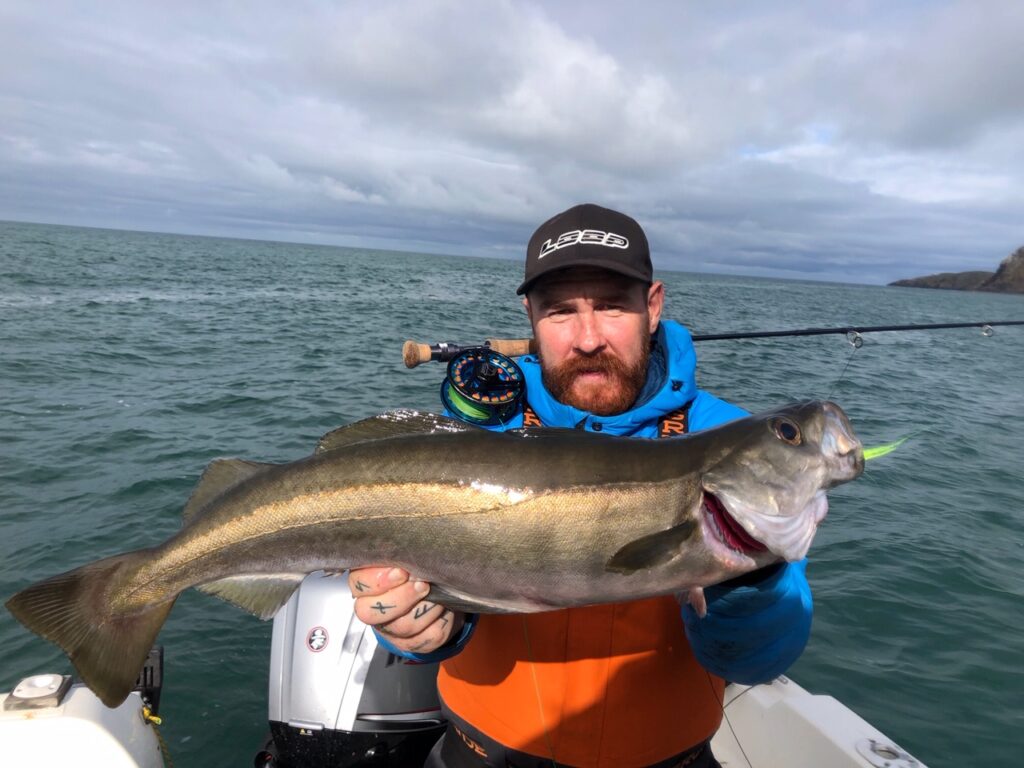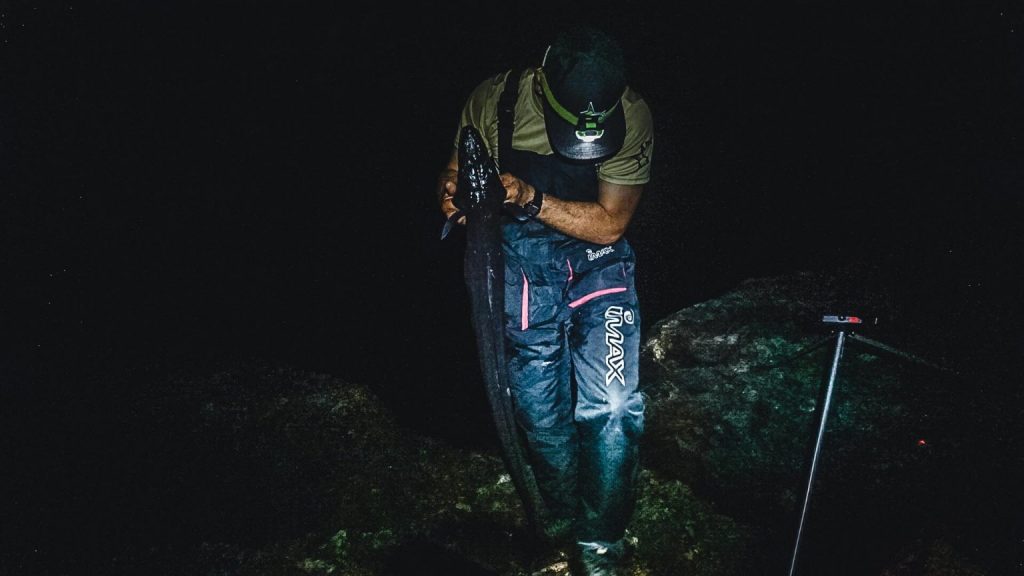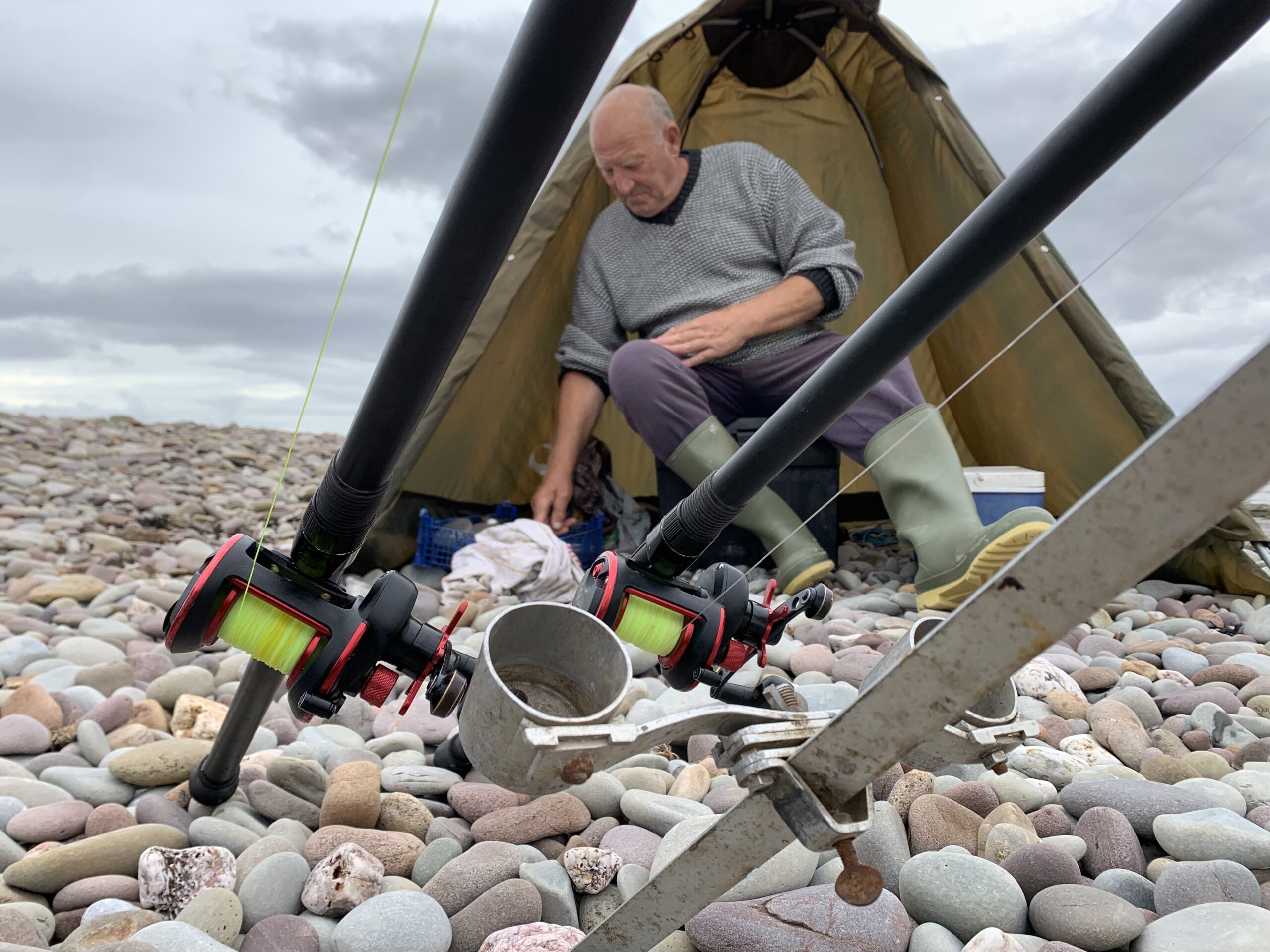
Find the best multipliers
If you’re looking for a multiplier the chances are you already know what you’re doing and probably have a good idea what you want already. For those looking to buy their first multiplier, I’ll quickly go over why they are useful before we look at specific models…
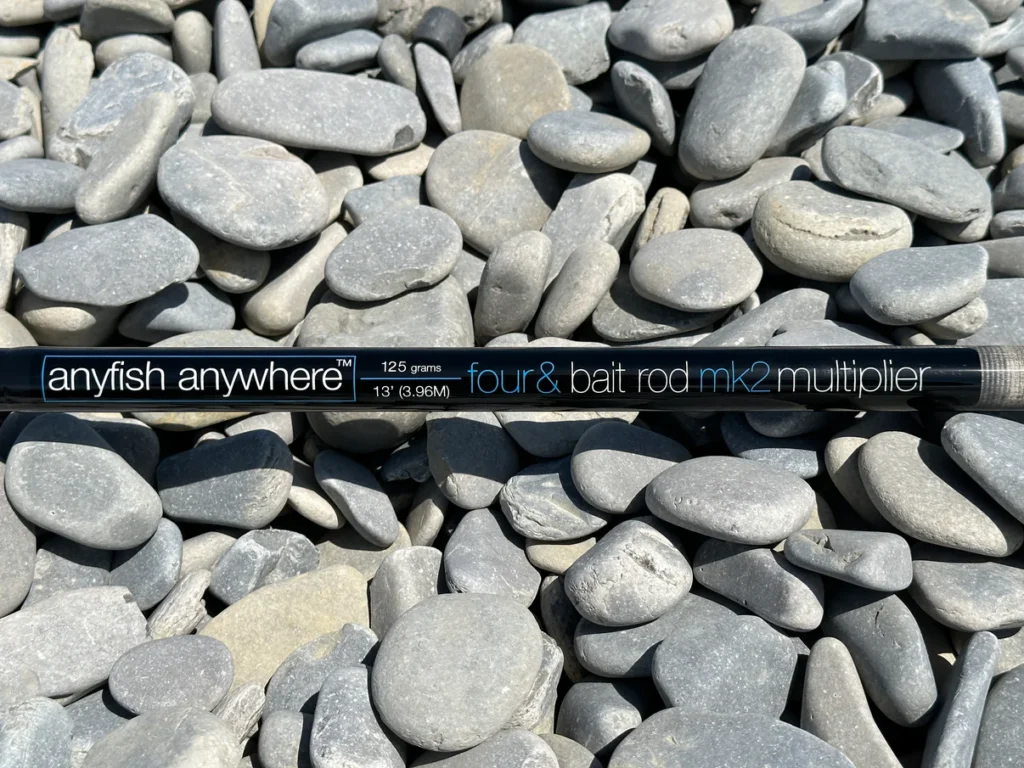
Why people use multipliers in the UK when fixed spools are now so good
Multiplier reels have higher gear ratios. This means for every turn of the handle, significantly more line is retrieved than with a fixed spool reel. The benefits of this when trying to pull larger fish away from snags, or when fishing deep water are immediately obvious. There are several other benefits too.
1. Firstly, you can use much heavier lines on a multiplier than you can on a fixed spool reel. Fixed spool reels start to loose performance significantly with monofilament lines above 25lb breaking strain. A multiplier can handle far, far heavier monofilament lines and function perfectly.
2. Secondly, they are stronger, so if you are pulling hard into a snag, a multiplier can take a lot of pressure without breaking. You can pull snagged rigs straight out of weed, instead of losing tackle.
3. Thirdly, they can store a lot more line, which is useful at very deep water marks or when boat fishing in deeper waters.
4. In the right hands, multipliers can allow for much further casting. This is because you can get the friction far lower than you can with a fixed spool reel. This is a big deal in some locations.
5. And the last key benefit – they tolerate heavier leads with ease. Fixed spool reels can start to struggle with heavier leads and with time will pack it in if they are made to work too hard.
There are also many anglers who simply find it more satisfying to fish with a multiplier and have more control over their fishing. Most prefer a standard fixed spool beachcasting reel, because it takes time to get to grips with a multiplier and they are more prone to birds nests / major line tangles.
Best multipliers for beach fishing UK
There are two broad types of multipliers used in the UK – those designed primarily for shorefishing, and those designed for boat fishing. There is cross over between these reels, but multiplier reels for shore fishing have shallower, wider spools to maximise casting distance. They also have more advanced braking systems.
We’ve ordered the multipliers from price high to low.
Penn 525 Mag4 – best dedicated beach fishing multiplier
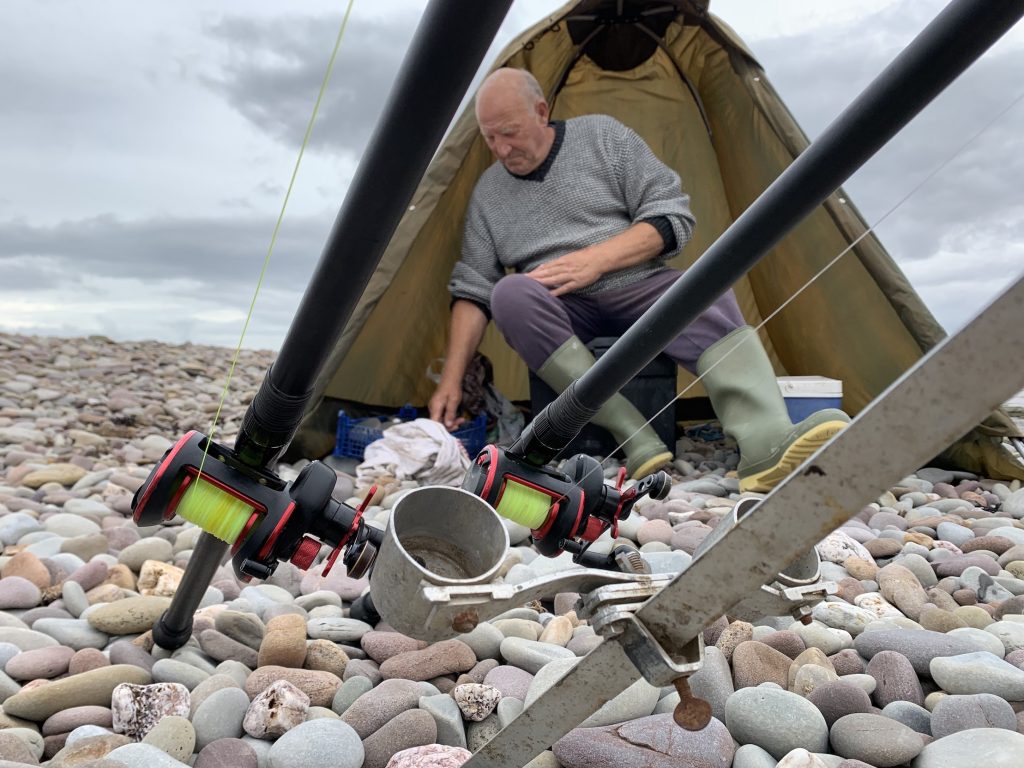
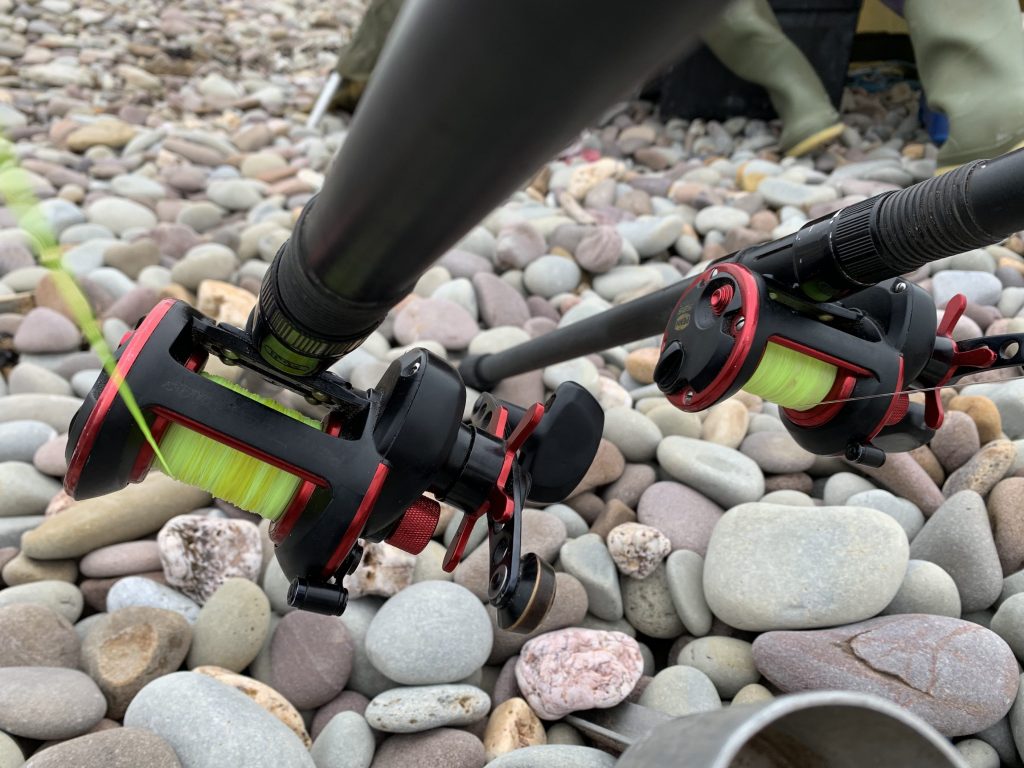
Penn’s latest long beach casting classic is the Mag 525 4. The reel pictured about is the popular mag3. This is an excellent all-round multiplier for beach fishing. It allows experienced casters to reduce the braking mid-cast to get a few extra meters in the cast. This is useful at certain marks, for instance, reaching channels in huge estuaries like the Bristol Channel. It has an adjustable magnetic brake system, a solid stainless steel main and pinion gears and an aluminium spool. The Versa drag system is smooth, and can handle a maximum drag of 9kg, though some find the clicking noise annoying. The reel weighs in at 439 grams, which is pretty light for a beach casting reel. Despite this, the reel is strong enough that you can pull hard into snags and know that the reel will hold up to any pressure you put on it.
The retrieve is 6:1:1 and one turn of the handle brings in 29” of line… That’s a lot. Not ideal for the whiting or dab that make up the bulk of British winter catches! But – very useful for bigger fish like huss that can crash dive into the kelp at rough ground marks.
The older version of this reel was my first multiplier. I used it from beaches and estuaries around Cornwall with no trouble. Recommended. It’s got a good legacy for a lot of anglers.
Penn Fathom II (Penn Casting Special) – the best for rough ground tolerance & all-round BEEF
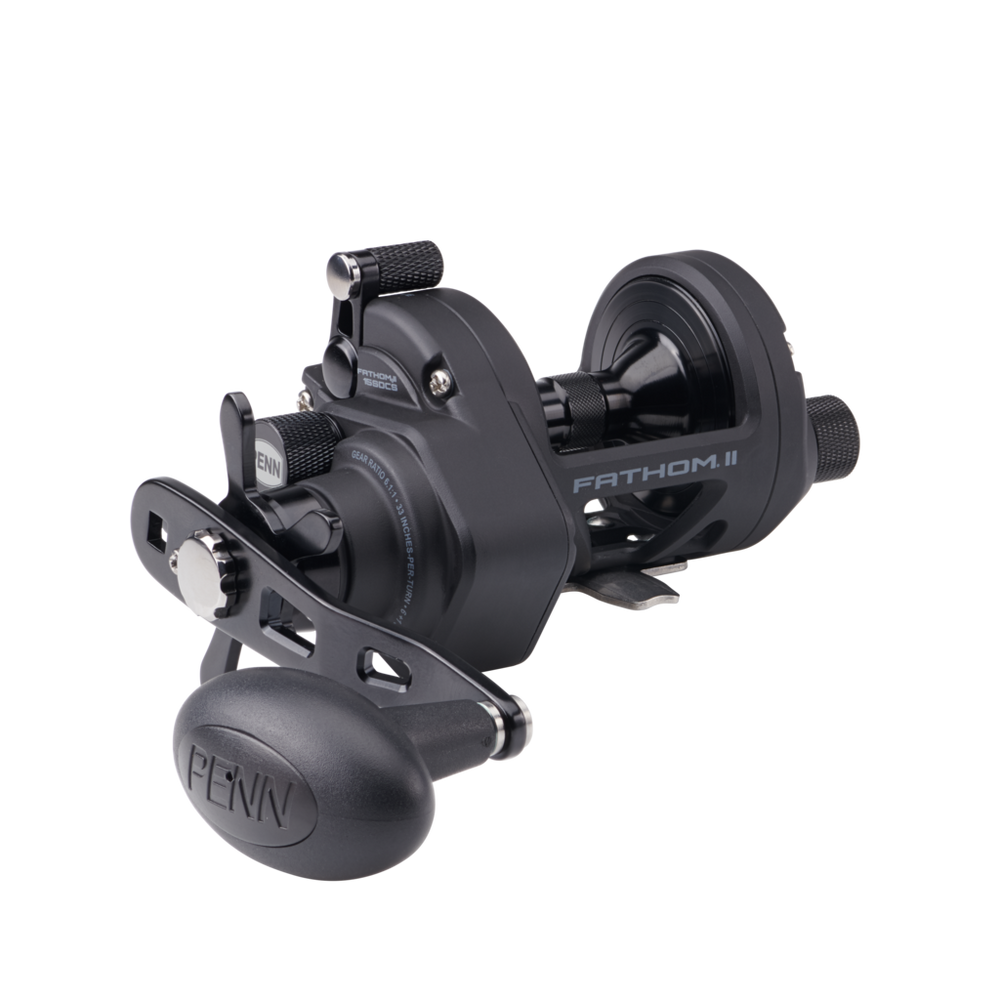
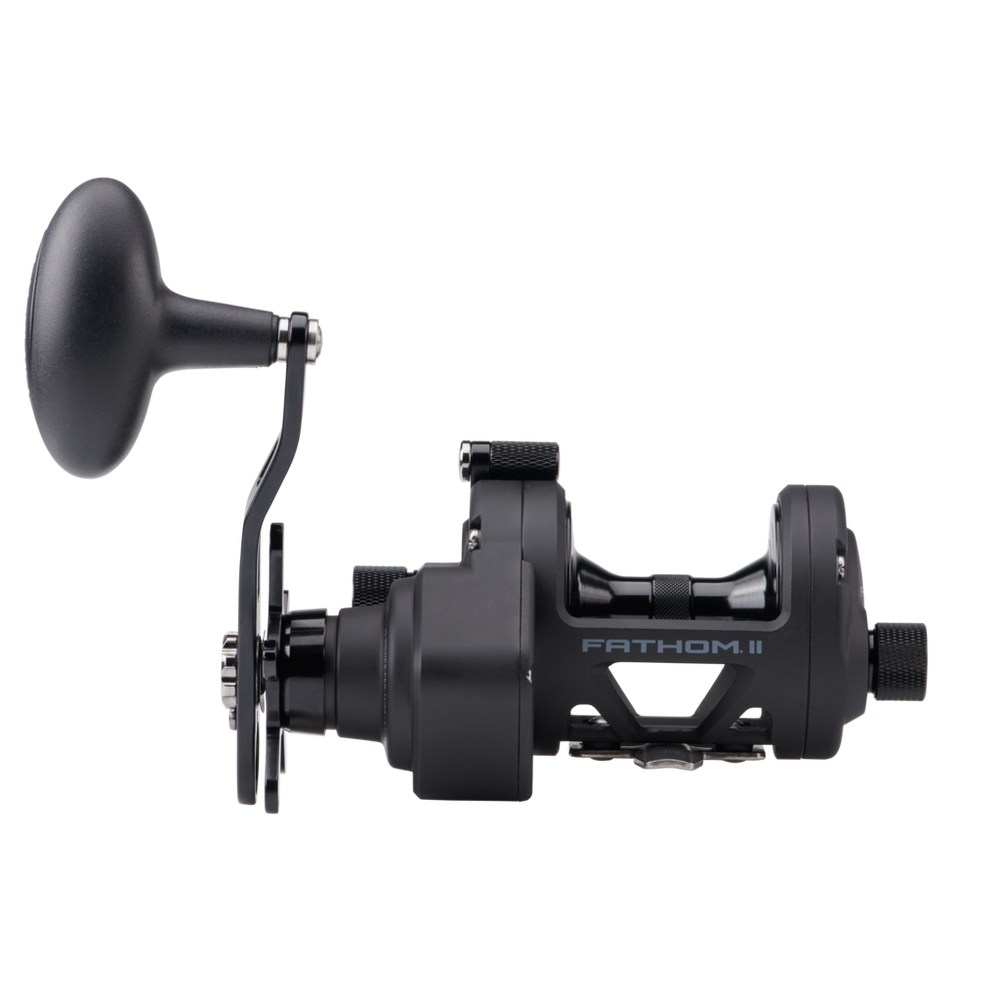
The Penn Fathom II Casting Special gives you unprecidented casting distance and power – it tops out our list as the versatile ‘rugged’ option. Its full metal body and side plates ensure durability, while the 6.1:1 gear ratio, achieved through precision-cut marine-grade bronze main gear and hardened stainless steel pinion gear, provides efficient line retrieval. It’s become a mega-hit amoungst die-hard rough ground anglers but is a reel you could just as easily use from beachmarks, with its ability to fling lead to the horizon.
A standout feature of the Fathom II Casting Special is its ‘knobby’ magnetic braking system, offering anglers precise control over casting to adapt to various conditions and baits. The live spindle with a free-floating spool enhances casting distance and accuracy, while the fast gear access side plate simplifies maintenance. The line capacity is exceptionally high.
We only hope that the legacy of these latest versions of the reel will be as impressive as the early PENN reels. A Scottish guide we interviewed told us that he has multipliers on his boat that are several decades old and still working fine. It will be interesting to see if the latest reels from PENN will have that kind of lifespan.
The other Penn Fathom II’s are also highly recommended.
Daiwa Millionaire 7HT – best budget option if you don’t need magnetic breaking
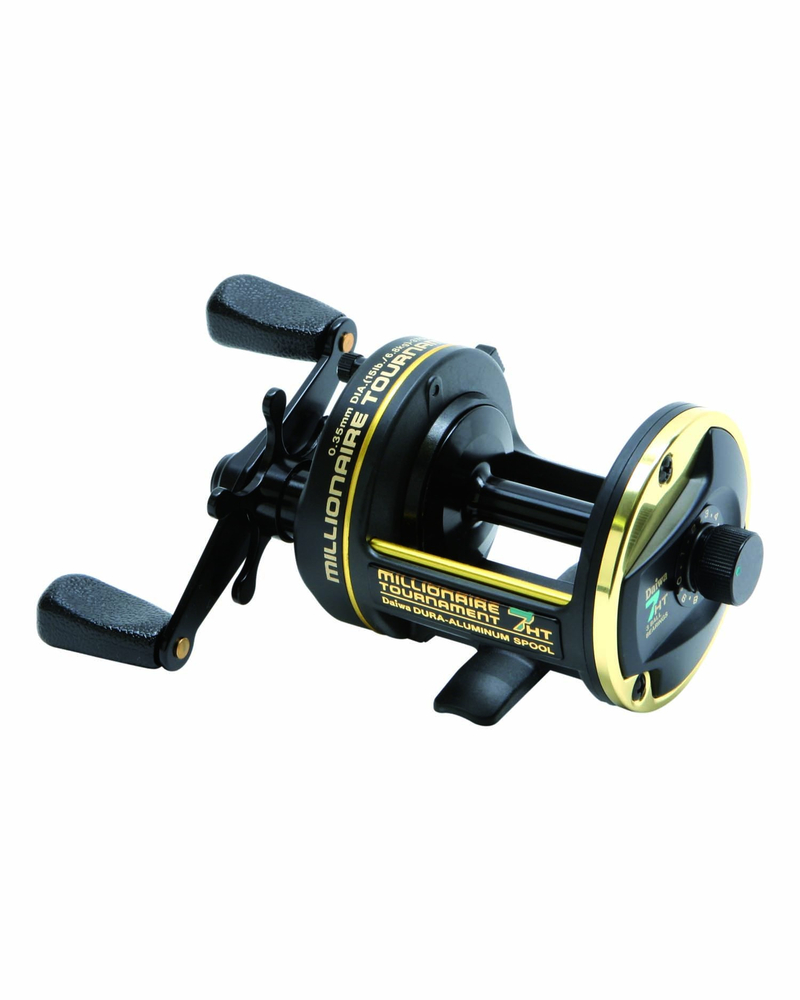
There are three different versions of the Daiwa Millionaire and they come at very different price points. Our understanding is that the cheapest version – the Millionaire 7HT – is just as capable as the more expensive models, but does not come with magnetic breaking. This means that unless you’re an advanced angler, it’s much more likely to get birds nests but otherwise will perform just as well.
7HT MAG Review – best for distance casting with lighter lines
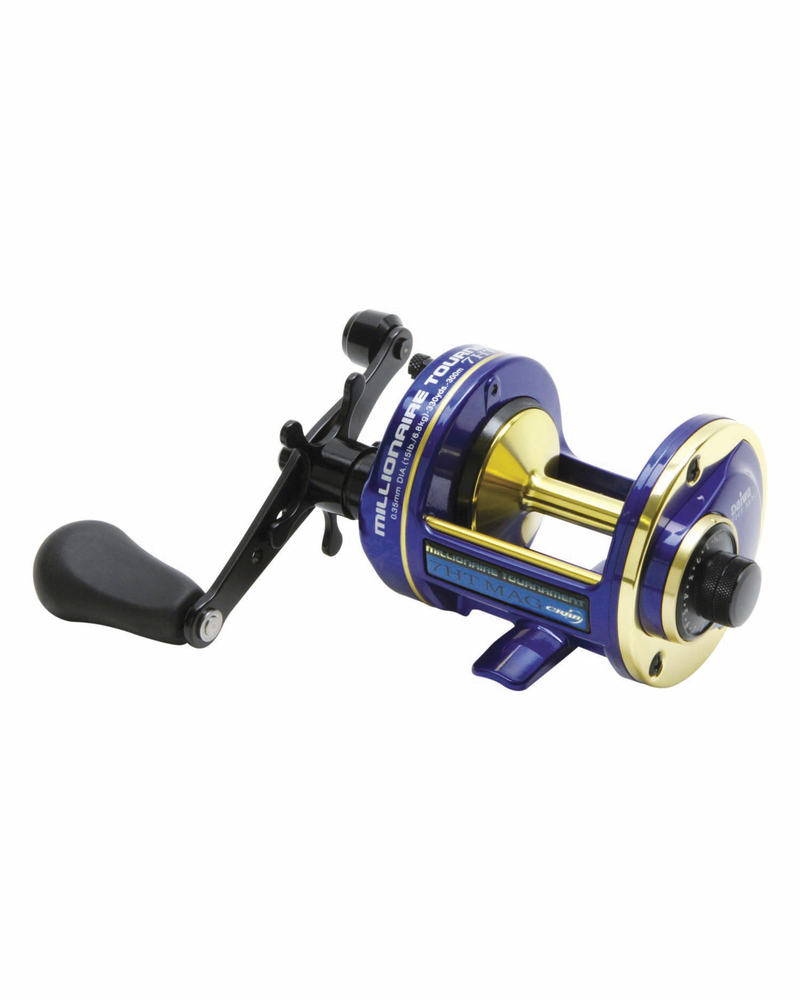
Then you have the second version, the Millionaire 7HT MAG. This version is a bit more powerful and has a higher gear ratio. The build quality is probably better, too. However the main difference is the magnetic breaking. This feature makes the reel much less prone to birds nests, so you get the benefits of a multiplier without some of the problems they’re notorious for creating (tangles!). The slight downside of the magnetic breaking is it might not allow for such long casting, because the spool spins more slowly the more you apply it.
The Daiwa 7HT models are perfect for lighter line fishing over clean ground, for super-long distance casting with lighter lines.
How does it’s magnetic breaking work?
The Magnofuge braking system is an intelligent system that detects the centrifugal force of the spool, allowing it to achieve maximum speed early in the cast and preserve as much of that speed as possible. As the centrifugal force reduces, the Magnofuge makes minute and gradual adjustments to the magnetic resistance, perfectly synchronized with the speed of the spool, resulting in effortless distance casting.
The Millionaire 7HT Mag is also incredibly smooth, thanks to its six ball bearings, including one corrosion-resistant ball bearing. This feature is particularly important for sea fishing reels, as they are often exposed to the corrosive nature of saltwater. If properly maintained the reel should go the decades.
With a gear ratio of 5.8:1, this reel offers a swift retrieve, even in rough conditions with ten buckets of kelp on your line. It’s got some pretty intense cranking power, as you’d expect.
The reel also has a weight of 12.2oz, a line capacity of 300m 15LB, and a gear ratio of 5.8:1. The Daiwa Millionaire 7HT Mag reel is a must-have for any serious angler.
7HT MAG ST Review
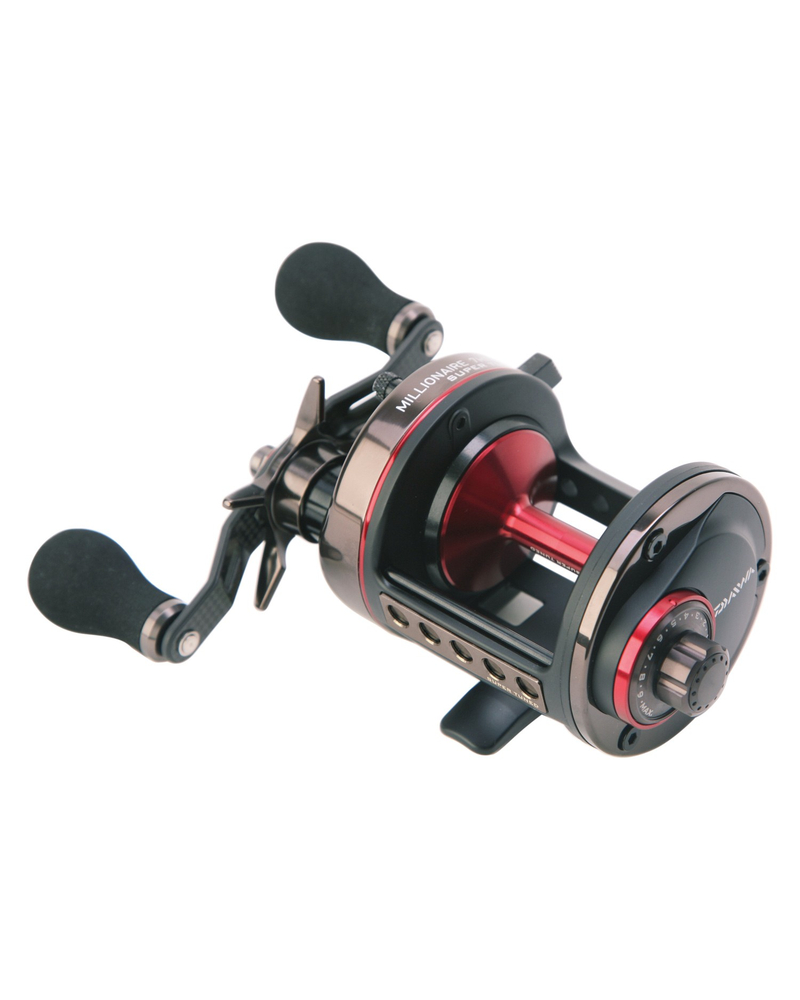
The third version, and most expensive option, is the Millionaire 7HT MAG ST. This reel has the magnetic breaking, but improvements have been made to it by the Daiwa engineers to allow for further casting while still getting the benefits of the magnetic breaking. We do not know how this new system works and have not yet tested each model to see for ourselves. This reel has the highest build quality of them all and is firmly in the ‘supreme’ end of multiplier reels for shore fishing.
The MAG ST provides the ultra high end of casting performance while managing the trade off between distance and control that cheaper models have to make. If you’re looking to elevate your fishing and casting experience and don’t want the faff of tangles then this might be the multiplier for you. Certainly a luxury option and most anglers will not find it necessary at all for their angling.
Daiwa SL30SH Review – a bigger reel , suitable for taking on the boat & fishing from the shore. The reel has a cult-following.
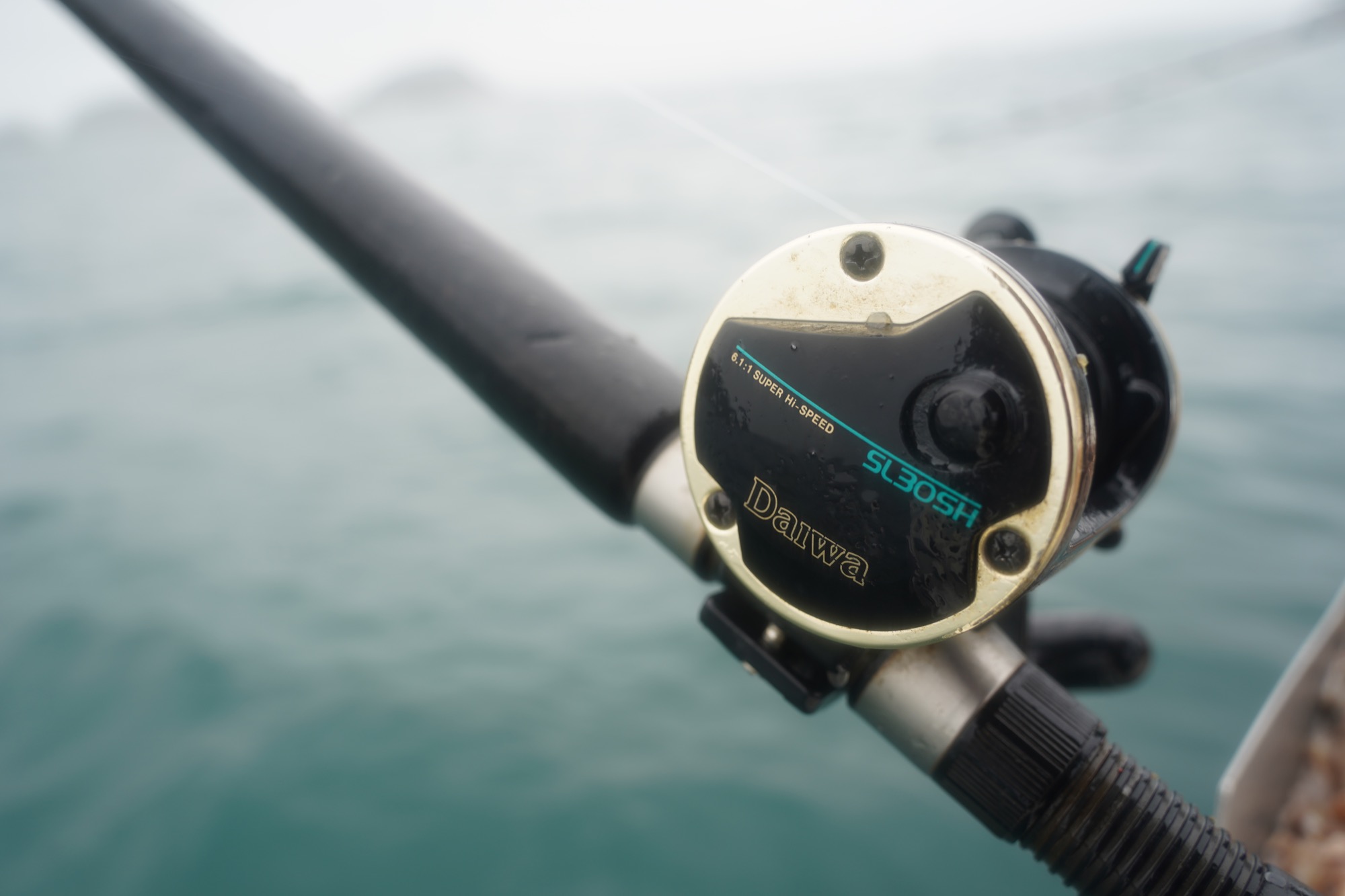
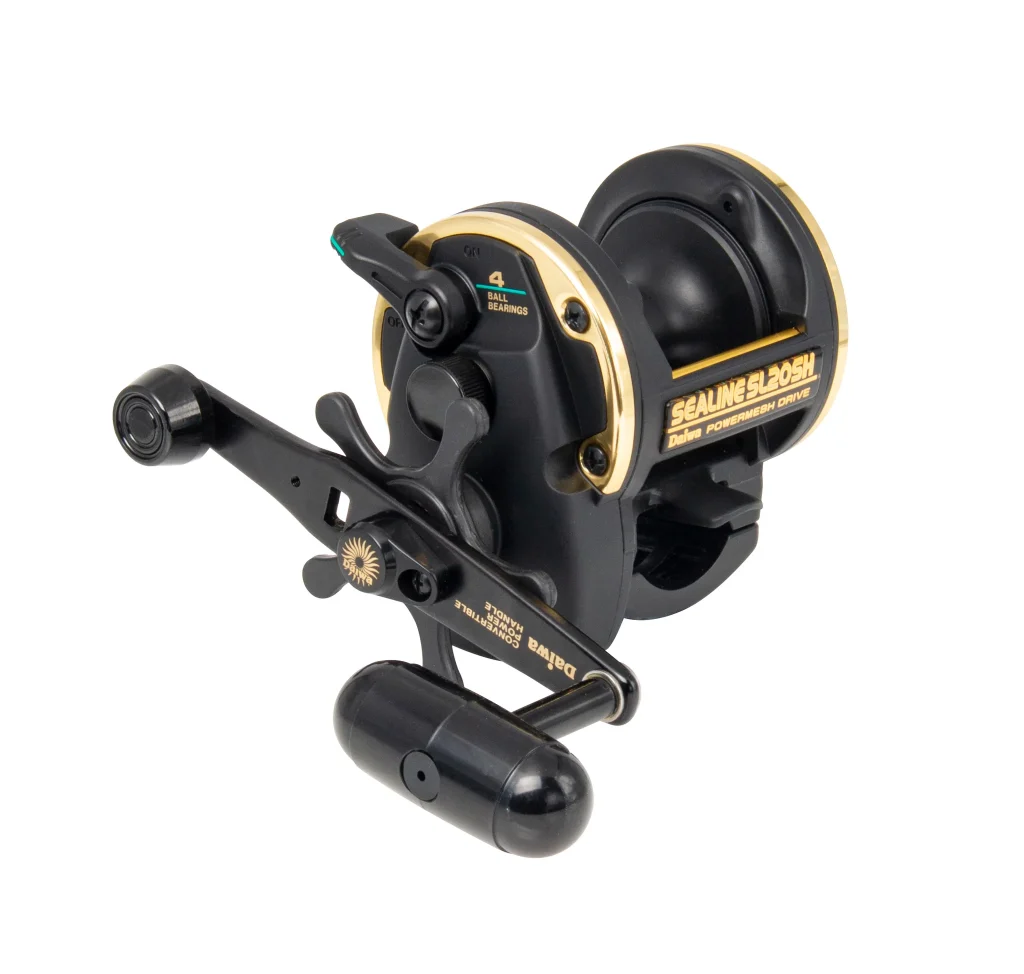
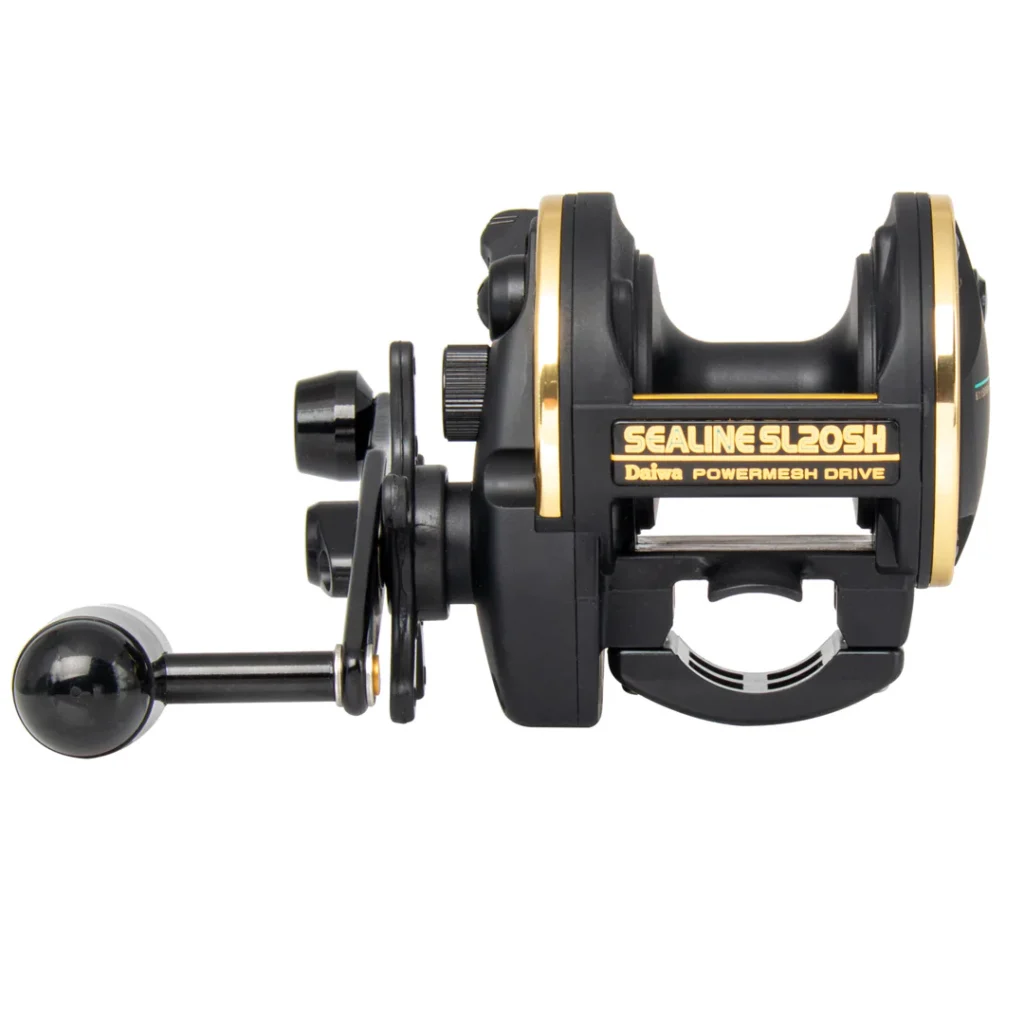
The Daiwa Sealine Slosh multiplier comes in a couple of sizes – the SL20SH and the SL30SH. The second of these is bigger and has a higher line capacity, so is better if you’re going to be use heavier monofilament lines. Anglers fishing rough ground appreciate the tough build of the thing and the 6:1:1 retrieve for pulling conger out of snags.
You can also use the Daiwa Sealine for boat work, like up tiding for powerful rays or tope. The SL20SH has such a cult following amongst sea anglers that they have nicknamed it The SLOSH. With a capacity of 310 yards of 15lb mono, it is perfect for general beach work or for rocky marks with its fast retrieves and great casting.
Tronix Pro Guerilla Review – 6500 – best sub-£100 multiplier, don’t buy a multiplier for less than this unless it’s through a mate!
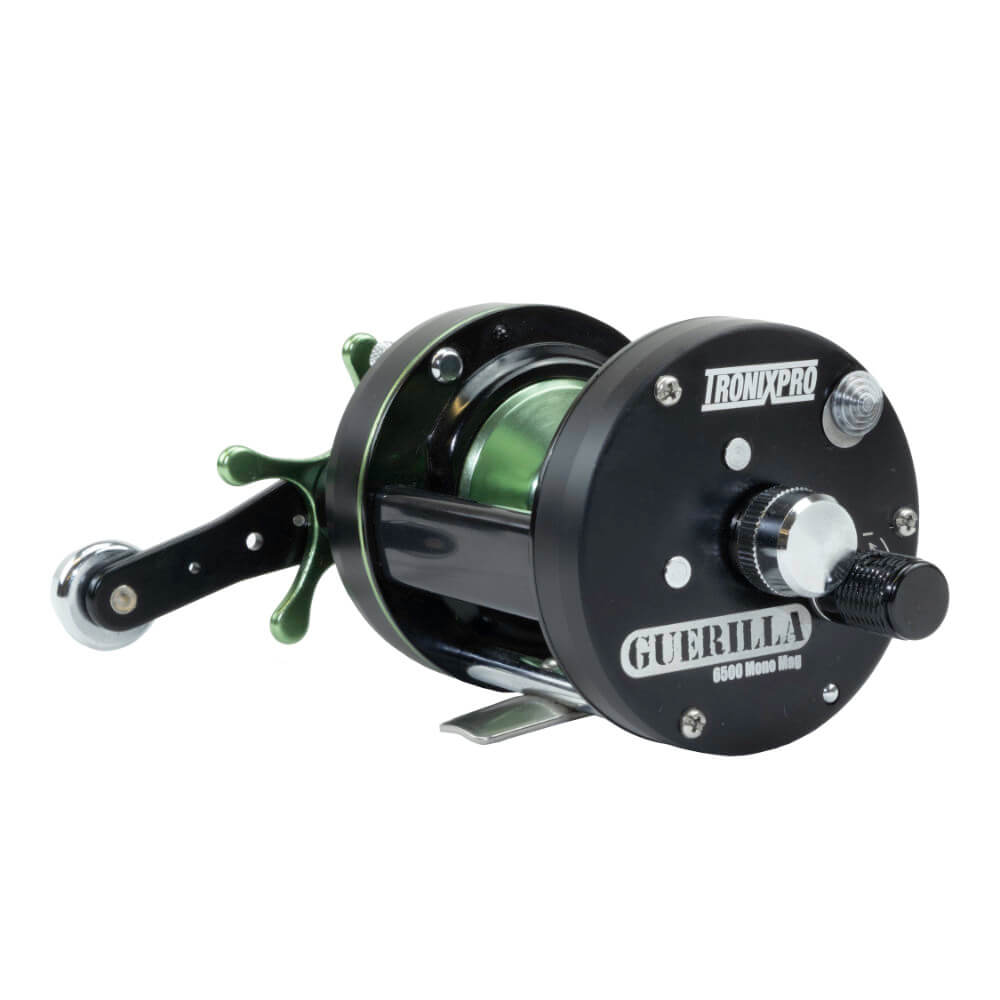
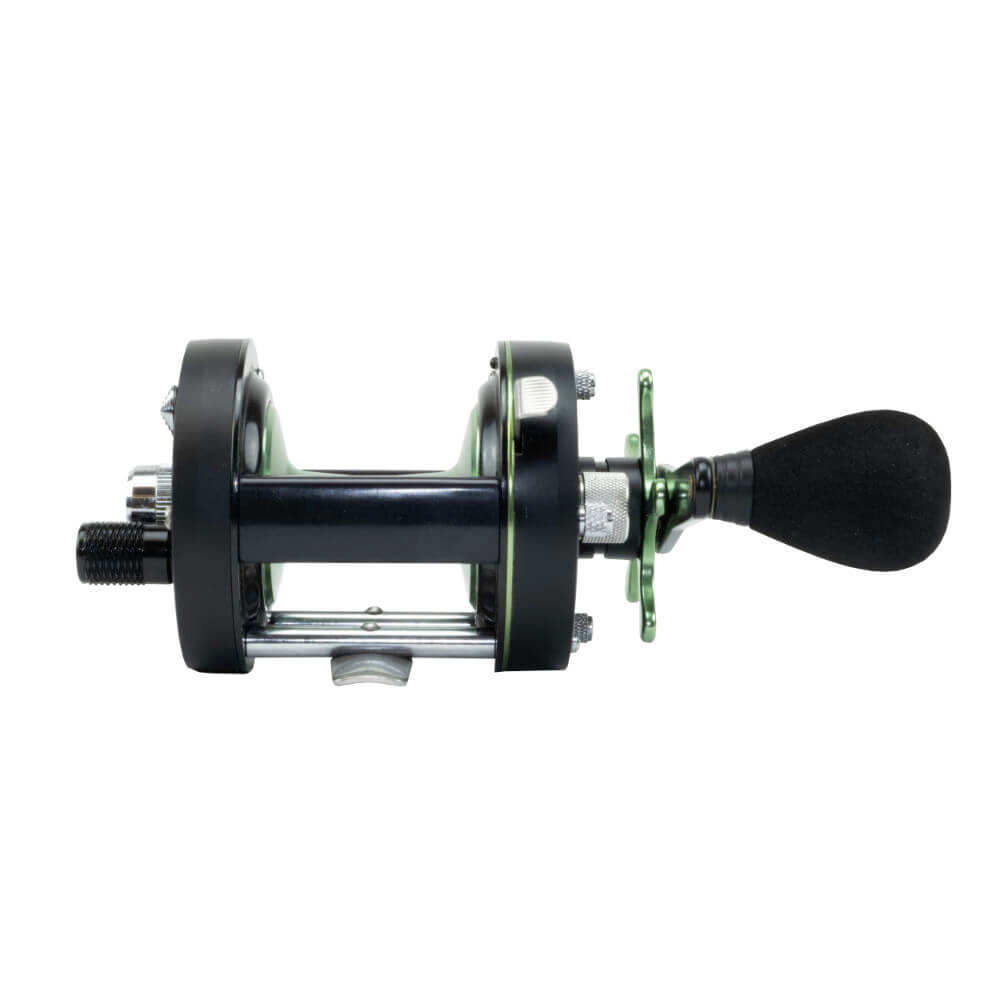
The Tronixpro Guerrilla Mono Mag reel has both right and left-handed options in a 6500 size. It’s good for a variety of situations, as it has a lower retrieve ratio than some more expensive multipliers, meaning it’s actually more sporting with smaller fish. Realistically, you don’t actually need a very high gear ratio for the majority of British sea fishing.
It has an 8kg star drag and can hold 250m of 0.35mm line. Many multipliers come with deeper spools that hold much more line than that, but when has a fish ever taken out more than a quarter of a kilometre of line for you? You also won’t need to use backing on this reel.
The single magnetic brake design is favoured by much of the tournament casting scene as helps avoid the very worst bird nests but still maximises casting distance. We suspect that the single magnet system might be more of a challenge for a beginner due to there being fewer magnets controlling spool speed. The single magnet system can allow you to cast further because you can fine-tune the speed of your spool without as much of a risk of tangles.
This is an excellent option for the sensible angler that wants to use a multiplier but doesn’t want to sell a kidney. It’s also a useful generalist beach casting reel.
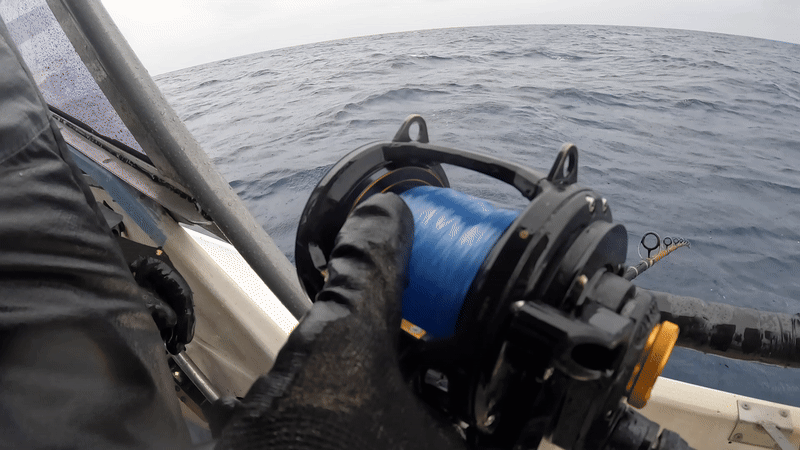
Boat fishing multipliers
Boat fishing multipliers have more aggressive retrievals with deeper, narrower spools that hold more line. They also tend to have tougher drag systems for fighting very big fish. If you buy a specialist jigging multiplier, it’s likely to have a larger handle, be lighter weight and have special features that make slow jigging and speed jigging easier.
There are a few flagship multipliers out there that stand out as exceptional. We will focus on look at these reels in depth, and focus on Penn, Daiwa and Shimano in that order, along with shout outs to a couple of other brands at the end.
At FISHMAG we reckon getting the right reel is more important than getting the right rod. The higher end Shimano, Penn and Daiwa reels are built for overseas markets which place much higher demands on their reels than some reels aimed at the UK domestic market, which is why we can recommend them unreservedly. There are of course many good multipliers not included in this guide.
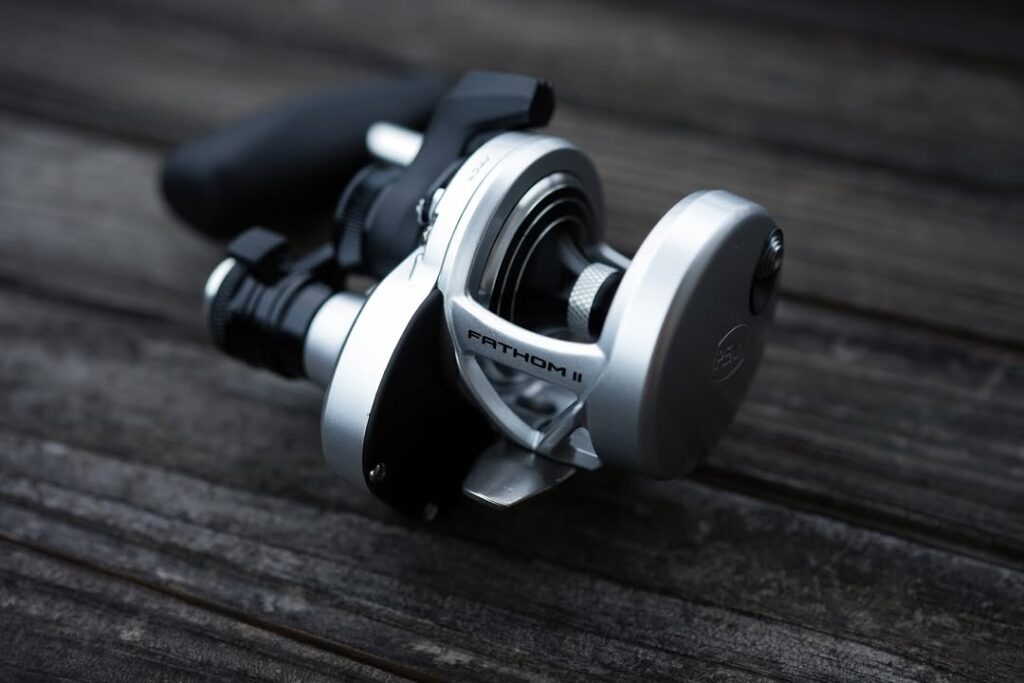
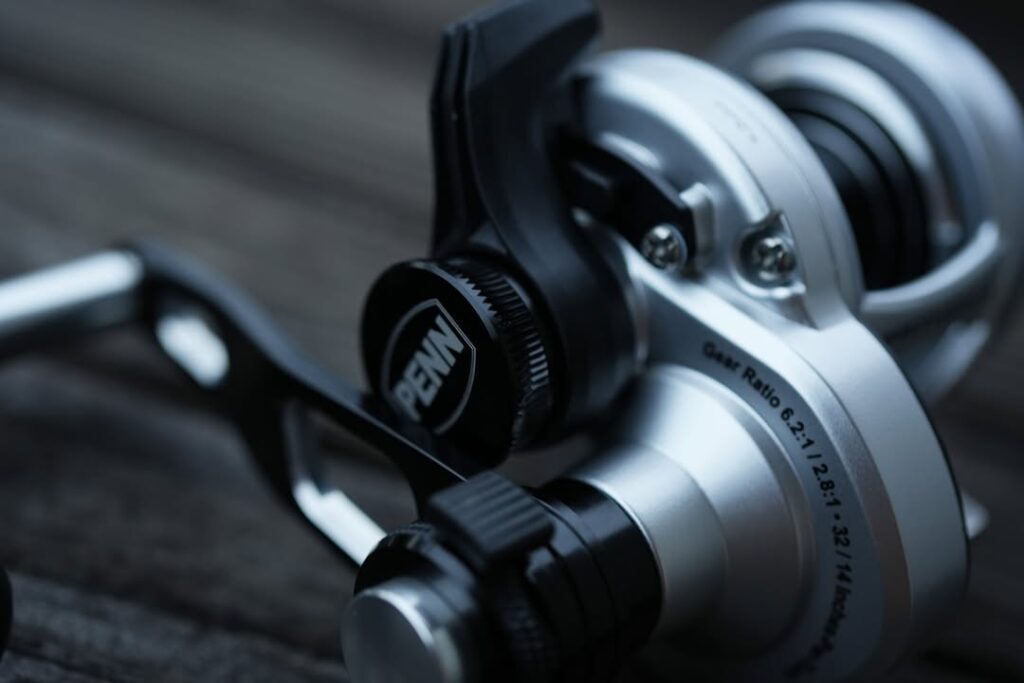
Penn fathom multipliers
The Penn Fathom multipliers are some of the best for boat fishing in the UK and have been tried and tested over years by many die-hard boat anglers. There are three of different versions of the Penn Fathom for boat fishing (not to be confused with the Penn Fathom Casting Special which we looked at above in the shorefishing section).
1. You have the Penn Fathom low profile (below) which is a baitcasting reel which has a star drag.
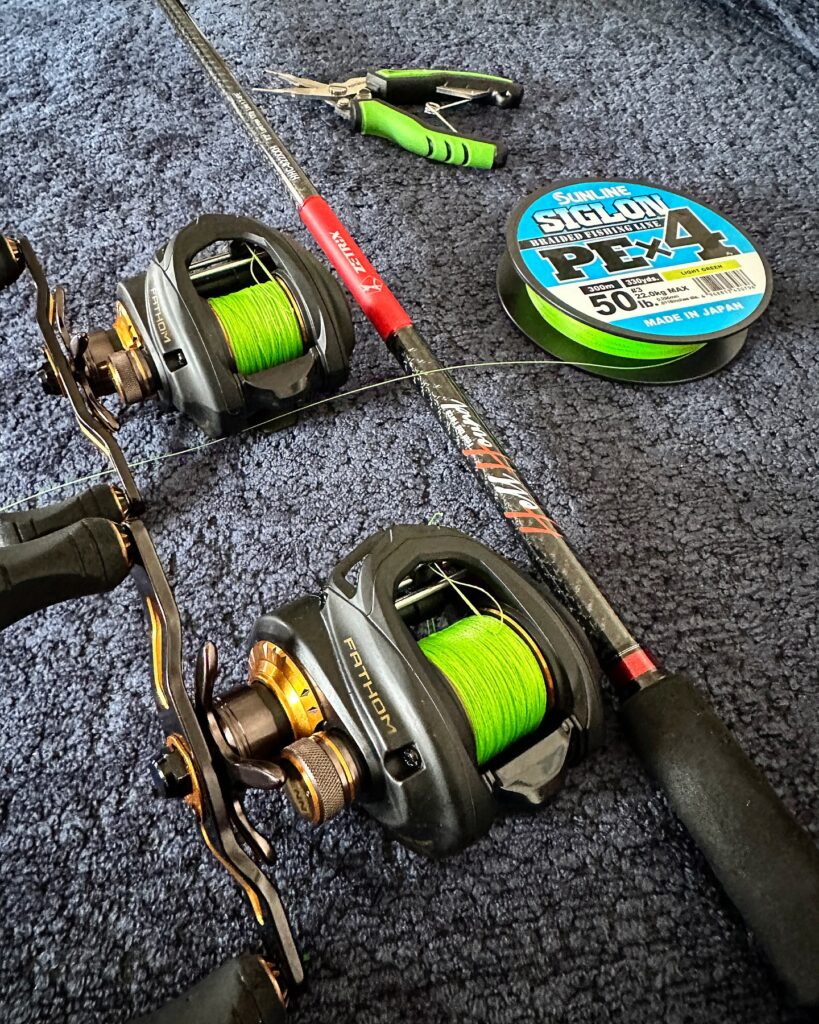
2. You have the standard Penn Fathom NLD (below) which has a lever drag.
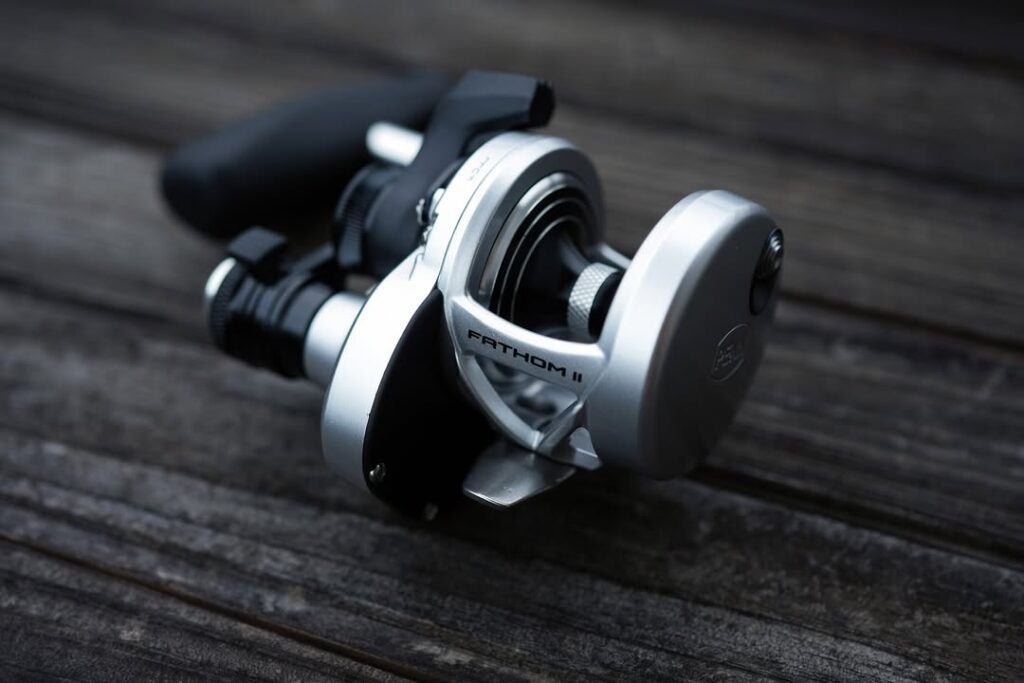
3. Then you have the Fathom NSD which has a lever drag, which has a more conventional design, suitable for use as both a shore or boat reel
The lever drag on the standard model (NSD) makes it easier to adjust the drag on the go if you have a crash diving pollack heading for a wreck on your hands. If you’re using a specialist jigging rod and you aren’t fishing deeper wrecks in strong current, the low profile baitcasting reel makes for a really nice light set up for working all day on a jigging rod.
Penn Multiplier Size Guide
Let’s look through what each size multiplier from Penn is useful for and what kind of rod it will pair well with. We will use the Penn Fathom range as an example.
Penn Fathom Low Profile 300
– for pairing with a specialist jigging rod, for example, pairs with a 200g specialist jigging rod such as the Penn Pattalion Solid Jigging 200g.
Penn Size 15
Smallest size, for heavy jigging over wrecks on a jigging rod or bottom fishing with light lines (e.g., Penn Fathom II 15LD). Pair with Penn Battalion Boat Rod 12-20lb for example.
Penn Size 20
Very big jigs or deeper waters, and heavier lines over deeper wrecks (e.g., Penn Fathom II 20LWLH). Pair with a rod in the 20-30 lb class.
Penn Size 25
Medium size, between the 20 & 30 in purpose (e.g., Penn Fathom II 25NLD2). Pair with a rod in the 25-50lb class.
Penn Size 30
Larger size, for medium to heavy fishing – big jigs, heavy lines, offshore wrecks (e.g., Penn Fathom II 30LD2). Pairs well with a rod in the 30-50lb class for dedicated wreck fishing in deeper waters, where you will be using large pirks for cod or heavy bottom fishing rigs.
Penn Size 40
Even larger, for heavy bottom fishing. High 6.0:1 retrieve (e.g., Penn Fathom II 40NLD2). Most anglers will find this to be overpowered for UK species.
Penn Size 60+
60+ for common skate as it can be a challenge to get them off the bottom.
The Penn Fathom Low Profile – the best jigging multipliers for lightline fishing
When it comes to Penn’s baitcaster style reels, the sizing changes. The 300 size Penn Fathon low profile is essentially a baitcaster, with very easy access to the spool for your thumb, and plenty of power for inshore work on modern jigging rods. If you’re fishing fairly shallow wrecks there’s really no need for anything heavier than this if you’re looking for a sporting approach. If this is your kind of thing you might like our jigging rods guide.

Daiwa Saltiga Multipliers
Watch out! Daiwa give reels numbers to refer to the year they were released. E.g. 15 for 2015 in the product names alongside the reel size. This can make it tricky to order online, so here’s a decoded version of a Daiwa reel name…
‘DAIWA 22 SALTIGA 15SL’ – what the heck does this name mean?
The ‘22’ is refering to the year 2022 when it was released. The 15 at the end is referring to the reel size ‘15’. The ‘SL’ means super light. There are quite a few different letters they put on the end. A single ‘S’ means shallow spool, so you don’t need backing if fishing shallow marks with light braid. The ‘HG’ on some of them stands for high gear. If there is an ‘L’ at the end it is because the reel has a left handed handle. However, this is worth checking in the product description as it could also mean something else – you really can’t be too careful with all these letters being thrown around!
The main thing that matters of course is the size of the reel, which is the number that comes after ‘Saltiga’. Thankfully, the Daiwa Saltiga sizes are consistent with the Penn Fathom sizes, so you can use the same size guide we have above for the Fathoms. I’ll run through the sizes again anyway specifically for the Saltiga.
Daiwa Multiplier Sizes
Why you might want a Saltiga
Firstly, the obvious factors – it’s extremely smooth and long lasting compared to a lower cost reel, which makes it pleasant to use and own. The line lay is going to be exceptional which reduces the odds of birds nests. It’s also going to feel extremely responsive and ‘snappy’ which is nice when you’re jigging. Here are some other benefits:
- It has an auto-engaging clutch, which just means that as soon as you turn the reel handle, the clutch engages and you can retrieve. Line stops coming off your spool instantly. This means you can react faster to takes from fish and also helps prevents tangles if you hit the bottom and your spool continues to spin even when line is no longer coming out. Most importantly, if you are jigging, you can go from a falling jig to retrieving without manually activating the clutch. This is a major benefit.
- It’s magsealed, so the life span is unlikely to be cut short due to saltwater corrosion from intensive use. Salt on boats is ruthless towards reels.
- In the jigging version (which comes in blue as opposed to silver) the pinion and drive gear are both made from brass.
- It has a power handle – oversized for comfort while jigging all day.
- The retrieve is silky smooth, one of the smoothest reels you can buy, and with a three-point system that helps keep it smooth over time.
- Comes with a spool lock on the side plate, which means you can pull out of snags with no risk of damaging the reel by flicking that on before yanking your hook.
But what about the best budget multiplier from Daiwa?
The Daiwa ‘SLOSH’ as it’s name is pronounced comes in two popular sizes – 20 and 30, both the same reel but with different sized spools. The 6.1:1 retrieval rate is a very fast retrieve making them useful on the boat at deeper marks. They have a simple design with minimal components -so “nothing to go wrong” – a theory that has largely held true for thousands of anglers across the country that hold this reel in high regard as a low-cost workhorse that does the job well. Can be adjusted to have a power handle. If you’ve already read the shorefishing multiplier section you’ll have seen this reel already – it’s a fantastic reel for somebody that wants to own just one for all their boat and shorefishing needs.
Recommended for:
- Light boat fishing (mackerel feathers, live baiting)
- Drifting for pollack
- Up-tiding
- One reel you can use for shore fishing and boat fishing
- Can be used for larger species thanks to high retrieval rate
- Good for rough ground fishing and fishing for conger eels from shore
- Comfortable casting distance of about 80m (fine, but it’s not a distance-casting reel).
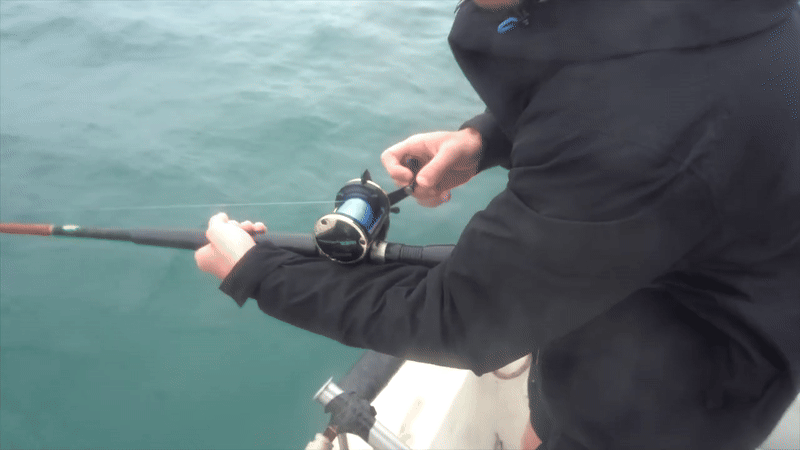
Shimano boat fishing multipliers
Shimano multiplier sizes are significantly larger than Penn & Daiwa reels at the same ‘number’, because they use their own sizing system.
E.g. a size 20 weights not far off double the weight of a Daiwa size 20 and probably has a much higher line capacity.
Shimano also change the sizing depending on the purpose of the reel – e.g. jigging multipliers vs standard multipliers.
Instead of decoding their numbering system which seems likely to cause more confusion that it’s worth, I will highlight some of the best Shimano multipliers and say what they are useful for and what rods they would pair well with.
Shimano 19 Jigger – pairs with 20lb boat rod or specialist jigging rods for which they’re designed
Shimano Torium 2000gh – again, pairs with 20lb boat rod or specialist jigging rods for which they’re designed
Shimano Speedmaster 8 – also pairs with 20lb boat rod or heavier, designed for more general-use than their specialist jigging reel
Shimano Salica 8 – A very lightweight reel that is built to handle big fish. Limited line capacity if using mono.
The best budget Shimano Multiplier
Shimano TDL 15 (or 20 size) – Deep sea & wreck fishing option at reasonable price (Shimano’s answer to the SL05H from Daiwa). Again, not to be confused with the size 15 from Daiwa or Penn which will be far smaller than this.
For most boat anglers looking to do bottom fishing with baits – this is a go-to quality option that will put up with whatever you throw at it. Nothing fancy but does the job well.
Multiplier reel sizes & general info
What size multiplier for UK shorefishing?
Different reels suit different styles of sea fishing. A smaller reel like the Daiwa 7HT is perfect for clean beaches, pairing well with 15lb mainline and a shock leader for smooth, controlled casting. On the other hand, if you’re tackling rough ground, a beefier reel like the Daiwa SL20SH, loaded with 30lb straight-through line, is the better choice. If you’re looking for something much lighter, check out some of the Abu reels, as some of these weigh close to half a lot of their competitors, but they’re less versatile.
For those after a do-it-all option, reels like the Abu Garcia 6500 series or the Penn 525 hit the sweet spot—long-distance casting over clean ground with enough cranking power to handle mixed terrain. Seasoned anglers often collect a range of reels, fine-tuning their setup for different conditions. But for most UK fishing, a well-chosen all-rounder will handle just about everything, only falling short in extreme rough ground or when serious distance is needed.
What size multiplier for UK Boat Fishing
With Daiwa & Penn sizes: At the smallest end, baitcasting reels such as the Fathom Low Profile 300 pair perfectly with modern light jigging rods casting 150-200g max. Size 15 multipliers are suitable for heavy jigging on rods weighted to 20lb. Size 20 multipliers pair with rods weighted to 20-30lb for deeper wrecks and fishing with heavier rigs on the bottom. Size 30 pairs with dedicated heavy outfits for wrecking. Reels larger than that are only needed for very specialist fishing such as targeting skate, which we don’t cover at FISHMAG.

